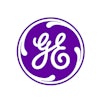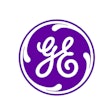
AuntMinnie.com is pleased to present the eighth in an ongoing series of practice management articles contributed by the Radiology Consulting Group in Boston. This twice-monthly series addresses topics and issues of concern to radiology administrators and business managers.
By Patricia Whelan, Tom Schultz, Nicole Pliner, Barbara Hubley, and Dr. Giles BolandRadiology Consulting Group

The solutions range from Internet-based radiology resources for clinical research to homegrown intranet solutions for everyday clinical and operational problems. For example, radiologists have long been enamored of the possibility of interpreting cases from home, on a pocket PC, or even on a cell phone.
Leveraging the virtual reading room
In the summer of 2000, Massachusetts General Hospital (MGH) in Boston was hit with a dramatic increase in exam volume for teleradiology cases, particularly in neuroradiology. Rather than lose the services of a neuroradiologist who was moving to London, the teleradiology operation and neuroradiology division agreed to design a system for reading cases from the neuroradiologist’s new home office across the Atlantic.
A primary and secondary (fail-over) system was designed. The primary configuration was set up by Eagan, MN-based Wam!Net. MGH leased a T1 line from Boston that connected to a facility in London, and from there to the neuroradiologist’s home.
Cases were sent from a teleradiology server at MGH that receives studies from client sites to an FTP store-and-forward device located in Boston. The device would then send anything that landed on it to the London location. A Web-based image-display tool, Amicas 2.4, was then used to view studies off the local server.
When the project began, cable modem technology was not available at the neuroradiologist’s location in London, and other options to partner with an entity with such access had been exhausted. Therefore, MGH opted for a dedicated T1 line as its primary connection.
However, cable modem access at the radiologist’s location became available just as the T1 line was installed, so cable was set up as a secondary system. The neuroradiologist now logs into the MGH teleradiology system using virtual private network (VPN) technology, and views images on the Amicas Web viewer located in Boston.
Appropriate considerations were given to the choice of video card, and to screen resolution and other interpretation concerns. The MGH installation is also unique in its inclusion of a voice recognition component with report integration into the MGH teleradiology management system.
For voice dictation, the group chose a laptop with a Royal Philips Electronics handheld microphone (SpeechMike), and voice recognition software from Talk Technology of Bensalem, PA. These capabilities allow the neuroradiologist to save the report under the teleradiology number and send it electronically to Boston, where it is automatically integrated into the teleradiology management system.
As a result of the time difference between Boston and London (-5 hours), the teleradiology arrangement has improved the department's ability to meet report turnaround guarantees. Exams that previously might not have been read until the following day are completed well before 8 a.m. local time.
Remote interpretation is one way in which the practice of radiology can move beyond the bricks and mortar of a hospital. The traditional model -- images being routed to a central location where radiologists are located -- is beginning to erode. With increased bandwidth available for Internet connectivity, the geography of radiology practice is changing.
Making the intranet an extranet
Intercontinental reading is an Internet-based solution that focuses on the clinical impact for the radiologist. Another radiology Internet application is Web-based image ordering, which not only improves workflow within a department, but can also provide image accessibility for referring clinicians and patients.
The limited filming initiative at MGH began with the implementation of PACS. It was sold to senior executives as an investment with clearly identified annual cost-savings commitments. In order to meet aggressive reduction goals in film, supplies, and even a few full-time equivalents (FTEs), a Web distribution system was integrated into the electronic medical record and made available on any PC with proper login privileges.
Although an institution-wide Web-based image-viewing application had been deployed, MGH recognized that there was still a need for images to leave the organization. Images were needed for second opinions by physicians outside the network, and by patients located outside the U.S. Seeing that the process for requesting and receiving images was less than optimal, the group had a Web-based film-ordering page designed so that referring clinicians could request images online.
Requests generated by the Web site are automatically printed out in the image service center, formerly the film library, and prepared for pick-up. The requestor can check the order status online. And although issues related to security and patient confidentiality are still being worked out, the image service center has plans to host a Web site outside the hospital’s firewall so patients can view their images online.
In the current setup, patients can request an image online and verify its status. They can then come to the hospital, show proper identification, sign a release, and leave with a film. The image service center and the radiology informatics team are currently working on a CD solution for image viewing to replace the film. Over the next few months, two or three products will be selected, piloted, and evaluated.
The above examples share a common strand: they are made possible by PACS and the Internet. For a long time, the goal of radiology departments was to become filmless, but the goal has evolved with the times. Being filmless is no longer seen as the end, but rather the means, to achieving new Internet-based solutions. Digital radiology, combined with Internet technology, is bringing important changes to the practice of radiology. In the decades to come, it will continue to shape the industry in ways not yet anticipated.
By Patricia Whelan, Tom Schultz, Nicole Pliner, Barbara Hubley, and Giles Boland, MDAuntMinnie.com contributing writers
July 24, 2001
Patricia Whelan, MHA, is the senior manager of radiology informatics in the department of radiology at Massachusetts General Hospital.
Tom Schultz is the senior computing and information sciences engineer for enterprise medical imaging at Partners Healthcare in Boston.
Nicole Pliner, MPH, is the managing director of the Radiology Consulting Group.
Dr. Giles Boland is the executive director of teleradiology in the department of radiology at Massachusetts General Hospital.
Barbara Hubley is the senior manager of clinical support services in the department of radiology at Massachusetts General Hospital.
Related Reading
Proper training can reduce errors in PACS implementation, July 4, 2001
Strategic marketing brings in referring physicians, June 27, 2001
Radiology and orthopedics join forces to cut throughput time, June 13, 2001
PACS quality control ensures that exams get read, May 30. 2001
Secure patient satisfaction through superior service, May 17, 2001
Copyright © 2001 AuntMinnie.com



















